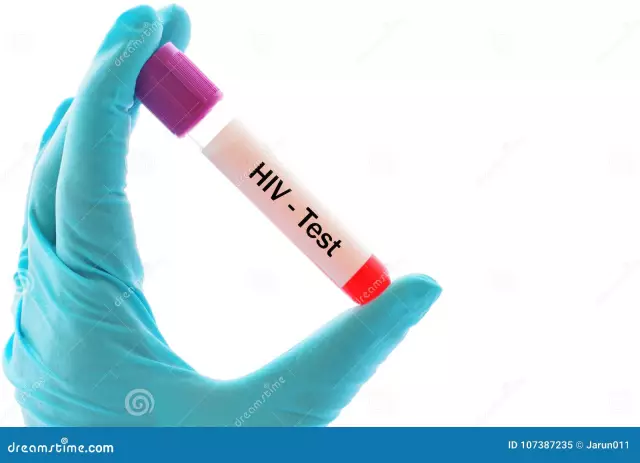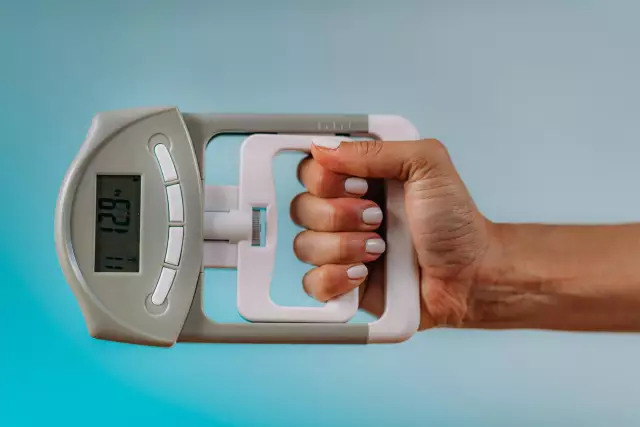- Author Rachel Wainwright [email protected].
- Public 2023-12-15 07:39.
- Last modified 2025-11-02 20:14.
Allergic tests: definition and classification
Diagnosis of allergies using an allergy test

Allergic tests are carried out to determine an allergic disease in a person: an allergen is introduced, taken as a potential causative agent of the disease, and the body's response is monitored.
Allergy diagnostics should be carried out exclusively during the improvement of the condition - two, three weeks after a person has suffered an acute allergy.
Classification of allergic tests
Separate skin and provocative tests. Allergic skin tests can assess the nature and degree of development of the inflammatory response. They are carried out by introducing the allergen into the body through the skin.
Allergy skin tests are, in turn, divided into qualitative and quantitative.
High-quality allergic tests include:
- Direct samples. The allergen is applied externally using an application or drops, or injected by scratching the skin or giving an injection. A positive reaction is the appearance of a blister, inflammation or redness at the site of the sample. These symptoms develop after 20 minutes, after 6-12 hours, or after one or two days.
- Indirect samples. An allergy test is performed by injecting blood serum of an infected person and an allergen under the skin of a healthy person (one day after the serum). The resulting skin reaction indicates the presence of antibodies in the patient's blood.
If a qualitative allergic test determines a person's sensitivity to an allergen, then quantitative tests make it possible to assess the degree of this sensitivity. This method for diagnosing allergies is also called allergy titration, with its help you can determine the minimum concentration of an allergen that causes a visible allergic reaction
Provocative tests are prescribed only in cases where the obtained result of allergic skin tests does not coincide with the previously collected allergic anamnesis. To conduct such a test, the allergen is injected into the tissue or organ that has suffered the most during the disease.
There are such types of provocative tests:
- Conjunctival - the allergen is instilled into the lower conjunctival sac. A positive reaction manifests itself in the form of itching, lacrimation and redness of the conjunctiva.
- Nasal - the test is carried out for allergic hay fever and rhinitis. The test fluid is instilled into one nostril, and the allergen is instilled into the other. A reaction is considered positive if there is difficulty in breathing and itching on the side of the nose where the allergen was injected.
- Inhalation. An allergic test is performed to identify the cause of the development of bronchial asthma: the patient inhales a solution containing an allergen using an aerosol nebulizer. If the lung capacity decreases by more than 15%, the test reaction is considered positive.
- Cold and heat. Such provocative allergic tests are carried out with cold, warm urticaria,
- Exposition. The test is carried out in the absence of clear symptoms of the disease. Its meaning is for the patient to come into contact with the suspected allergen in the environment in which he is usually found.
- Elimination. An allergy test is carried out according to the principle opposite to the exposure test: in case of a food allergy, a product that is believed to cause an allergy is excluded from the patient's diet, and in case of a household allergy, the patient is kept in an allergen-free room.
- Leukocytopenic and thrombocytopenic allergic tests. They are carried out to diagnose drug and food allergies: after the introduction of the allergen, the level of leukocytes and platelets is monitored.
It should be borne in mind that the result of the allergy test is influenced by the intake of sedatives and antihistamines - they reduce the reactivity of the skin, therefore, the use of these drugs is stopped 5-7 days before the test.
Found a mistake in the text? Select it and press Ctrl + Enter.






